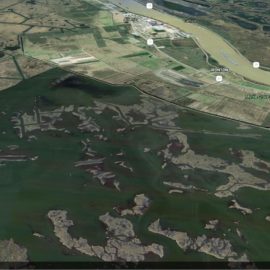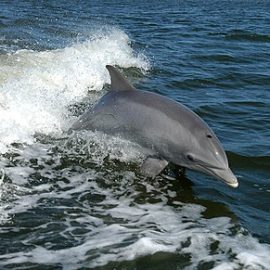
Diversions work. We know this and the Mid-Barataria Diversion is a good example.
Our natural resources in Louisiana are abundant but not limitless. The Mississippi River, a formidable sediment delivery machine second to none, has over eons doggedly crafted most of the land within her basin and down to the Gulf of Mexico. The Barataria Basin, all the land and wetlands on the west bank of the river from Luling to Grand Isle, has been depleted over decades at an alarming rate. We built levees that turned off the land-building mechanism of the river. The channels we dug through the wetlands accelerated saltwater intrusion and erosion. All this was done for safety, security and convenience, but the cost was the obliteration of a healthy deltaic ecosystem. The Mid-Barataria Sediment Diversion project will rejuvenate the basin by introducing fresh water and sediment into the system. The environmental impact statement for this project is available on the U.S. Army Corps of Engineers website. Please read and understand it. When I was a kid hunting and fishing in the Buras area in the 1960s, I was not keenly aware of the effects of these processes. I reveled whenever a new canal was dug: “Great, a shortcut to the duck pond.” Back then the marsh was still vibrant, with well-defined bayous, ponds and bays. Today you’re hard-pressed to find even a blade of marsh grass between the boat launch and the Gulf. In later years, my work as a sedimentary geologist/paleontologist taught me the mechanics of wetland building and destruction. I learned and witnessed firsthand that the wetlands were dying from sediment starvation, land loss and saltwater encroachment. We can, we must, restore this dynamic resource by building new land with the many tools at our disposal like dredging, river diversion, native plantings, dune building, living reef construction, etc. Dredging and pumping is a valid and necessary tool for rebuilding a beach or replenishing a localized area but is not sustainable, and is inappropriate for rebuilding a basin-wide wetlands ecosystem. River diversion projects replicate the river’s natural land-building processes, introducing fresh water and sediment to nourish the marshes and bays within its area. It’s a version of the same processes that we terminated with levees and once operational, it continuously executes its objective.
nola.com
As a volunteer he has worked to restock the grasses and trees that have been lost.
As a coastal restoration volunteer, I’ve planted trees and marsh grass, built dune fences and helped build living reefs. I’m most impressed, however, by the performance of the river diversions, both natural and man-made. Since 1972, I have observed the relentless destruction of the upper Barataria Basin at my camp, located south of the current Davis Pond diversion. Over the years, this near-pristine freshwater environment mutated to one of more saltwater influence and less marshland. The ecologic and environmental transfiguration was stark. Even the bugs changed for the worse. When the Davis Pond freshwater diversion started operating in the early 2000s, I was hopeful yet not optimistic that I would live to see any significant positive impact. Less than two decades later, the environment has been restored to what I remember 50-plus years ago. Fishing has never been better. I recently toured the Davis Pond area, where I walked on flotant marsh and hard ground willow tree forest that just a few years ago was open water. It’s working beyond my wildest dreams. The proposed Mid-Barataria project is planned for a lower part of the basin. Like Davis, it will replenish and rejuvenate existing wetlands and build new ones. The negative impacts will be significant because many species that followed the saltwater encroachment and marsh destruction will surely be displaced and/or killed — oysters, shrimp, dolphin and trout among them. The commercial and recreational folk (like myself) who target these species will likewise be displaced. We must remind ourselves that over time, we have followed our target species as their preferred habitat moved into these degraded areas. We shall continue to do so as restoration succeeds.
The Barataria Basin is needed for many reasons.
The Barataria Basin is vast and vital as a storm buffer, for human and wildlife habitat and to our culture and economy, but through our actions and neglect, it has steadily disappeared. Both the demise and successful restorations of wetlands are demonstrable and abundant as are the challenges. I have lived through many of these changes and faced their difficulties, yet my hope endures. Restoration will require great effort, determination and, yes, sacrifice, but we must make the hard choices for our progeny, for our legacy. Or not, and lose it completely.
Well said by a life-long outdoors man.



